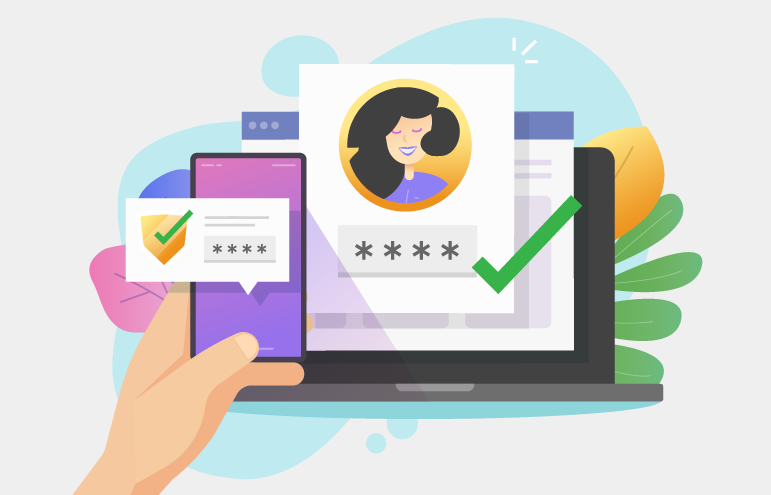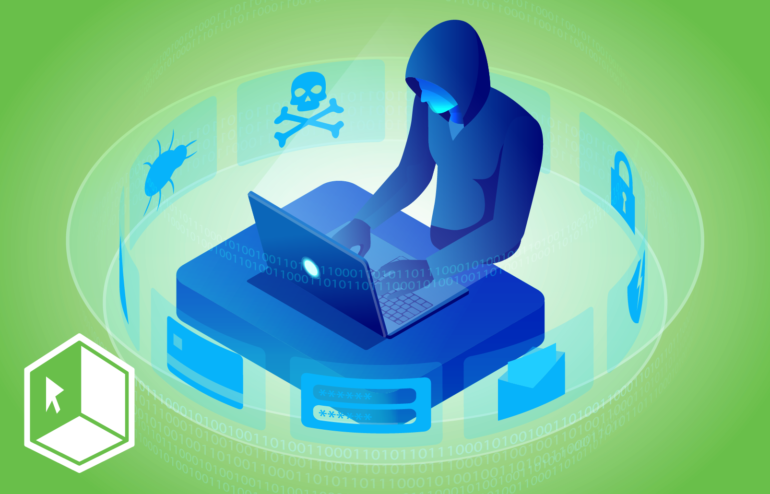Is Cybersecurity Your Weakest Link?
The financial landscape has changed drastically in the last 20 years, one of the most notable changes being the variety of financial services now being offered online. Although the wide-spread use of internet has made it possible to receive financial guidance from anywhere in the world, it has also created an environment where sensitive information and data could potentially be compromised by cybercriminals.
Today, professional hackers are spending more time and money than ever before to gain access to personal information for both monetary gain and “professional” recognition. The sensitive information that the financial services industry has access to continues to make them a prime target for hackers and other cybercriminals. Attacks can range from malware threats, DDOS attacks, phishing attempts and data breaches – all of which bad actors can use to commit fraud themselves or sell to a third-party.
Importance of Being Secure
Cybercrime continues to be a growing problem for banks and credit unions across the country. The impact of a cybercrime can be very costly for a financial institution, both financially and from a reputational standpoint. The main risks include theft or unauthorized access to sensitive customer information along with the disruption of normal business operations.
In addition, as the number of security threats continues to increase in the financial services industry, regulators are taking a closer look at financial institutions’ policies and procedures to ensure that they can effectively safeguard confidential and non-public information. As an example, the Federal Financial Institutions Examination Council’s (FFIEC) Cybersecurity Assessment Tool (CAT) is designed to ensure financial institutions are prepared in the event of a cybersecurity attack. The FFIEC CAT is now the guide regulators are using to examine institutions and determine their level of cybersecurity preparedness.
Some of the most common security threats financial institutions face today include:
Malware and Ransomware
Ransomware has established itself as one of the leading cyber threats for many organizations, but especially financial institutions. Using ransomware technologies, hackers can gain complete access and control over legitimate websites, often by encrypting data or programs, and extort ransom payments from victims in exchange for restoring access to the individual or business. Malicious software, or “malware”, is no longer characterized by simple aggravating popups and sluggish computer performance, but rather the encryption of all data on a machine, rendering it unusable.
Internet of Things (IoT) Attacks
Unsecured Internet of Things (IoT) devices such as DVRs, home routers, printers and IP cameras are vulnerable to attack since they are not required to have the same level of security as computers. To breach a financial institution, attackers will target insecure devices to create a pathway to other systems. Unsecure IoT devices are also used to launch distributed denial-of-service attacks (DDoS) against institutions. These DDoS attacks prevent legitimate users from accessing computer systems, devices or other online resources. The perpetrator floods the victim’s machine or network with false requests from various sources to overload the system and prevent legitimate access. A well-executed attack can interrupt a host of banking services including website access, ATM networks, and online banking platforms, in addition to internal systems and functions.
Phishing Scams
Phishing scams that specifically target financial institutions’ employees, attempting to obtain sensitive information such as usernames and passwords, have become increasingly common within the last few years. The goal of phishing is to direct employees to a fraudulent website where they are asked to share login credentials and other personal information. The information that employees are tricked into providing then allow for cybercriminals to read a bank or credit union’s critical information, hack into the employee’s bank and social media accounts, send emails on an employees’ behalf, and gain access to internal documents and customer financial information.
Lack of Third-Party Vendor Security
While a financial institution might have the right security systems and policies in place to protect itself and its customers from a cyber-attack, its third-party providers may not have the same level of security and diligence. This creates a major vulnerability for the financial institution. Without a proactive approach to vendor management, financial institutions are opening themselves up to increased levels of risk that can have a negative impact on the institution’s financial standing, compliance posture and overall ability to serve its customers. Federal regulators have issued guidelines to help institutions better understand and manage the risks associated with outsourcing a bank activity to a service provider. The FFIEC IT Examination Handbook was revised to help guide banks to properly establish and maintain effective vendor and third-party management programs.
Insider Threats
Often, all it takes is a disgruntled employee or ex-employee to release valuable security information and compromise system and data security. Additionally, cybercriminals are increasingly realizing success through bribery as a means to entice bank employees to give up their login credentials or other security information, allowing direct access to internal systems.
Lack of Employee Training and Security Expertise
The COVID-19 pandemic has certainly brought its share of challenges to the financial sector of business, including increased network vulnerability and internal threats as employees transitioned to a remote work environment. These changes required cybersecurity personnel to change their online security baseline and continuously adapt to the changing IT security landscape. With the increased popularity of remote work, company IT staff are encouraging employees to take charge of their own online security through testing and training. The training includes topics like the importance of password security and multi-factor authentication and helps employees understand their roles and responsibilities in protecting against security threats. Until this learning gap is resolved, financial institutions will continue to struggle to efficiently manage cybersecurity threats.
Combating Security Threats and Ensuring Institution Security
While cybersecurity has become a major point of discussion among professionals within the financial industry, the truth is that many financial institutions are too complacent when it comes to protecting themselves. With hackers using advanced technology, the “bare minimum protection” is no longer enough to keep sensitive information safe. To adequately protect against security threats, financial institutions must ensure that every device on the network has up-to-date antivirus software, adequate firewall protections and that all patches are up-to-date as a minimum requirement. In addition, financial institutions should also employ a layered security strategy, from the end-user to the internet to establish a secure IT environment. Adding preventive, detective and responsive layers to IT security strategy will help strengthen an institution’s approach and build an effective security foundation.
A uniquely tailored layered security approach enables financial institutions to:
- Monitor antivirus for servers, workstations, and off-site laptops
- Use services that evaluate site lookups to avoid exposure to compromised websites
- Scan the network for vulnerabilities and detect unusual activity against hackers and rogue employees
- Block access to all external ports while also monitoring the access of various machines
- Meet government regulations and requirements
- Counter extortion threats by preventing a hacker from holding your customer’s personal data for ransom with special customized software for stopping ransomware
- Patch machines, encrypt laptops, and install alerts on new devices plugged into the network
The security landscape is constantly evolving, and it is imperative to have a solid security plan in place that accounts for this evolution. It should be a fluid document that is frequently reviewed, updated and that specifically outlines administrative, technical, and physical controls that mitigate evolving risks. It is also important to test the full plan on a regular basis to ensure all procedures can be executed successfully and verify that all regulatory requirements are met.
Managing Security Needs
Many community banks and credit unions find that managing the security needs of their organization can be a time-consuming and challenging task. To help augment the security responsibilities, these institutions are turning to financial industry-specific IT and security service providers to act as an extension of their organization, provide timely support, and help the financial institution successfully design and execute a comprehensive security strategy. The right solution provider couples security measures with an understanding of and support for the unique security and compliance demands of the financial industry.
At Safe Systems, we believe that proactively protecting customer data will always be more cost effective than falling victim to malicious activity. To that end, we have the unique expertise to ensure that financial institutions employ the right combination of both broad and specific security products to create an ecosystem of protection. Safe Systems helps secure an organization’s endpoints, devices, and users by assessing vulnerabilities, detecting unwanted network activity, safeguarding against data loss, and preventing known threats while staying ahead of developing ones.





















